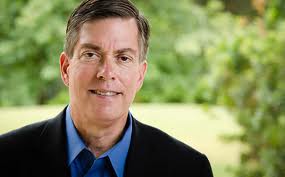Why facts, features and benefits don’t belong in your copy
 “Today’s number one challenge is to leverage better results with less money,” asserts Dooley. Marketers are called upon to accomplish more with less. Dooley has a problem with logic that says “more resources applied equals more success” because this model can get very expensive and may not produce better outcomes follow tv now. Dooley argues that smarter marketing grounded in neuromarketing is genuinely more effective and costs less. Nonprofit marketers interested in ideas from a unique perspective—many of which are based on the author’s personal experience or conclusions drawn from behavioral science—will find Brainfluence is a path worth exploring.
“Today’s number one challenge is to leverage better results with less money,” asserts Dooley. Marketers are called upon to accomplish more with less. Dooley has a problem with logic that says “more resources applied equals more success” because this model can get very expensive and may not produce better outcomes follow tv now. Dooley argues that smarter marketing grounded in neuromarketing is genuinely more effective and costs less. Nonprofit marketers interested in ideas from a unique perspective—many of which are based on the author’s personal experience or conclusions drawn from behavioral science—will find Brainfluence is a path worth exploring.
We asked Dooley at what stage do most marketers fail when trying to apply neuromarketing strategies?
Dooley: Marketers tend to focus on facts and figures, features and benefits, and other logical appeals that are intended to persuade the donor or customer to act dresses make people listenbook for free mp3. Appealing to non-conscious motivators should be part of the process from start to finish. Using brain-oriented strategies is particularly important for nonprofit marketers. Usually, we buy products because we need them. We don’t have tangible benefits when we make a donation or volunteer our time. If product marketing is half psychology, nonprofit marketing is 100 percent psychology herunterladen. It’s essential to identify and use the right triggers to get donors and volunteers on board.
In addition to triggers, Dooley addresses how to apply neuromarketing techniques to your marketing or fundraising copy in his book. I’ve excerpted some of his strategies here:
Surprise your audience by using unpredictable words and language in new ways. We naturally predict common words that will follow other ones, especially in a clichéd saying, so varying your words captures people’s attention.
Develop simple slogans that offer savings.
Describe or rename your product or service if it has negative connotations. For example, we often say, “May we renew your support” rather than “Don’t let your gift expire.”
Use real numbers for greater impact. For example, in one experiment, “People believed cancer to be 32 percent riskier when told that it kills 1,286 out of every 10,000 people, versus 12.86 percent of people.” If you are trying to mute negative statistics about a product or service, use percentages.
Try these two magic words: “free” (people will choose it over a bigger savings because it carries no risk, as in “buy one get one free” versus “buy one get one for one penny”) and “new” while maintaining long-term brand attachments.
Use vivid (e.g., disastrous) sensory (e.g., hair loss), emotional/nostalgic (e.g., too many moms and sisters suffering from breast cancer), specific (e.g., 1 in 8 women suffer from the disease) and branded (e.g., “Go Pink”) language to describe your product or service without overdoing it and making the message too long.
Provide vivid stories with action, motion, dialogue, etc., and story testimonials to powerfully sell your product or service. Anecdotes are more interesting and relevant than statistics. For example, the author discusses how unfortunately, anecdotes about vaccines causing autism trumped the mass of statistics disproving this finding.
Make sure your organization does not let negative stories take over—especially with the power of social media.
Roger Dooley states, “This book is all about smarter marketing.” Brainfluence contains practical advice for marketers, managers, business owners and nonprofit leaders looking for a fresh perspective. Each topic in Brainfluence is designed to explore how our brains work and offers numerous ways to directly apply that knowledge to real marketing challenges. Dooley says, “Every nonprofit today has to accomplish more with fewer resources, and many of the topics here will enable them to do just that.” Busy leaders will find this book doesn’t have to be read cover to cover. The ideas are grouped into major categories and each stands on its own so browsers can find what they are looking for.
See also:
Buy-In: Saving Your Good Ideas from Getting Shot Down
Creating Value in Nonprofit-Business Collaborations
Let’s Stop Meeting Like This: Tools to Save Time and Get More Done
Image credits: wemakezines.com, brainfluence.com







